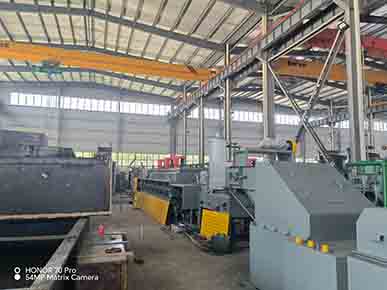As microcomputer-controlled technology becomes ubiquitous in rapid quenching furnace production, adhering to strict operational protocols is non-negotiable for safety, equipment longevity, and process precision. This article outlines critical precautions to mitigate risks and optimize performance, from startup procedures to ongoing maintenance in methanol-based systems.
The First Line of Defense Against Combustion Risks
Before powering on the furnace, thorough air purging of methanol cracking furnace pipelines is essential. Air trapped in the system can form explosive mixtures with methanol vapor, posing severe safety hazards.
Step-by-Step Purging Procedure: Isolate the methanol supply system. Use inert gas (e.g., nitrogen) to flush pipelines for a minimum of 15 minutes, ensuring all air is displaced. Verify oxygen levels using a gas analyzer to confirm <1% O2 concentration before proceeding.
Why It Matters: Incomplete purging has led to furnace explosions in industrial settings, highlighting the need for meticulous pre-startup checks.
Managing a Toxic and Flammable Resource
Methanol’s high toxicity (LD50: 5628 mg/kg in rats) and flammability (flash point: 11°C) demand airtight storage and leak-free pipelines.
Leak Prevention Best Practices: Implement double-seal valves on storage tanks. Inspect all connections (flanges, unions, valves) weekly using soapy water—bubbles indicate leaks. Install vapor sensors in enclosed areas to detect methanol concentrations above 200 ppm (OSHA PEL).
Environmental Considerations: Methanol spills contaminate soil and groundwater, requiring secondary containment systems and spill kits near storage areas.
Controlling CO and H2 in Exhaust Streams
Furnace exhaust contains carbon monoxide (CO, LEL: 12.5%) and hydrogen (H2, LEL: 4%), both highly flammable and toxic.
Flame Arrestor & Combustion Systems: Equip furnace outlets with pilot lights to ensure continuous combustion of CO and H2. Install spark ignition systems with fail-safe controls to prevent unburned gas accumulation. Monitor exhaust gas composition using online analyzers to confirm <50 ppm CO and <1% H2.
Safety Statistic: Inadequate gas combustion is a leading cause of CO poisoning in heat treatment facilities, emphasizing the need for robust exhaust management.
A Multifaceted Verification Process
Before each run, inspect critical components to prevent process failures:
|
Component |
Inspection Criteria |
|---|---|
|
Circulating coolant |
Check flow rate (≥10 GPM), pressure (≥30 psi), and temperature (<35°C). |
|
Hearth agitation fan |
Verify rotation speed (1800–2200 RPM) and vibration levels (<2.5 mm/s). |
|
Atmosphere pressure |
Maintain positive pressure (5–10 mbar) to prevent air infiltration. |
|
Furnace seal |
Visually inspect gaskets for wear; test seal integrity with smoke pencils. |
|
Thermocouples |
Calibrate against reference standards; replace if drift exceeds ±5°C. |

The Hidden Threat to Furnace Performance
Continuous use of methanol cracking furnaces leads to carbon black deposition, which:
Distorts thermocouple readings (error up to +50°C), risking heating element burnout. Reduces methanol cracking efficiency, compromising atmosphere quality. Routine Carbon Cleaning Protocols 1. Hearth Reactor Debris Removal Close main methanol inlet valve and flowmeter outlet ball valve. Open upper ball valve; use a steel rod or compressed air (80–100 psi) to dislodge carbon from lower outlet. For severe buildup: Depressurize the system and remove reactor panels. Manually scrape carbon deposits using non-abrasive tools. 2. Pipeline Debris Management Open furnace lid and isolate methanol cracking gas supply. Connect compressed air to pipeline inlet, blowing debris until no black smoke exits the furnace. For analyzer lines: Backflush with air at 50 psi to clear blockages. 6. Emergency Protocols: Responding to Leaks & Failures
Immediate Actions for Safety
Leak Detection: Use soapy water on joints; repair minor leaks with approved sealants (e.g., PTFE tape for threaded connections).
Major Leak Response:
Shut off methanol supply and vent the area. Evacuate personnel if gas concentration exceeds 10% LEL. Deploy explosion-proof fans to ventilate.
Thermocouple Failure: Switch to backup sensors immediately and recalibrate primary units within 24 hours.
Conclusion: Prioritizing Safety for Sustained Operation
Mastering these precautions transforms microcomputer-controlled rapid quenching furnaces from complex machines into reliable assets. By integrating rigorous startup checks, methanol safety protocols, and proactive carbon management, industries can achieve up to 99.5% process yield while minimizing downtime. Remember: in heat treatment, precision begins with preparation—and safety is always the first parameter in the control system.
BAI KA Copyright © 2025 ALL rights reserved